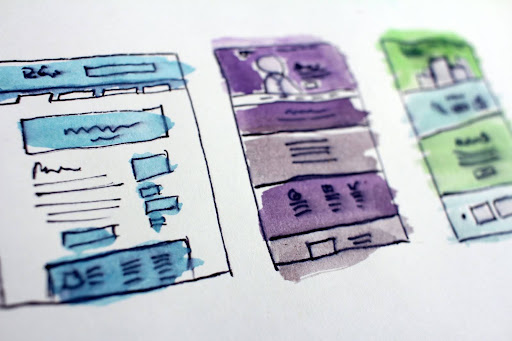Today, in the proceedings of the digital world of communication, email is the powerful utility that makes it convenient to have all personal conversations ranging from simple to highly formal even on your business discussions, engage yourself to experience and go forward with. However, in today’s digital universe, a stagnant email method doesn’t suffice anymore, and especially doesn’t work with broader group contact. It is evident that something has to be varied, and we are making our strategies match the demand for group email contact.
Understanding the Need for Transformation
Emails, similar to a typical business corporation encashing on its employees opinion, nowadays entail more than just passing of information for employees, can interact, be productive and develop relationships. As soon as group collaboration is concerned, the issues with the standard email system become clear. When you send the same message to many, they might not need it since it doesn’t relate well to their desires. Therefore, group email conversation should be personalized and scheduled.

What is Group Email Communication?
Group email communication refers to an approach of sending an email message to a fixed set of receivers at the same time. This means of communication is broadly used in both personal and business settings to do different things such as newsletters, announcements also in app updates. It is an effective method to reach a large number of people in an instant and guarantees the same message is passed to every recipient enabling consistency in the type of information delivered.
Group email communication is an essential instrument in marketing strategies, mostly in a professional setting, where businesses send their promotional content, product updates, or newsletters to their subscribers or customer base.
Group Email Communication Challenges
Communication through group emails tends to be difficult as there are so many of them to communicate through. It’s also hard to make sure that each message is relevant and keep people interested. Due to these troubles, some people may not be as productive, miss texts and even fight over misunderstandings. These issues may cast a shadow on a team, an enterprise or a business in general, where precision and effectiveness are crucial.
The Shift to Personalization
The personalization approach addresses the various needs in an area of group communication. This includes identification or knowledge of the audience, segmenting recipients based on relevant criteria and finally, it is tailoring the message to meet the specific needs of the segmented groups. Personalization makes sure that each and every message is worth something to those that is addressed to and hence increasing interest and effectiveness.
Utilising Technology for Effective Group Email Management
Technological advancement has led to the development of most tools to help in managing group emails. For instance, shared inboxes allow many people to work in tandem to process emails, ensuring timely and proper delivery. Things that automate jobs can aid in sorting, tagging, and categorizing emails and that eliminates manual human work and thereby ends up increasing efficiency. These tools not only make email management easier but they support teamwork and ensure proper communication.

Fostering Collaboration and Transparency
Transparency in the context of such group email discussions promotes an atmosphere of cooperation. By giving visibility to the members of the team ongoing conversations and email threads, organizations can early detect duplication of efforts so that unity of responses can be assured. Such a level of transparency not only stimulates the internal workflow but also strengthens the relations with the outside.
The Role of Analytics in Perfecting Email Strategies
The role of analytics in email communication cannot be underscored. Various metrics including open rates, click through rates and reply times are a good guideline to evaluate the success and efficiency of email approaches. Through ongoing assessment of the above mentioned metrics, businesses can establish what is effective, areas of improvement, and how to reach and connect with their audience. With a data-driven approach being chronicled in email communication, the data makes way for continuous refinement and optimisation.
Practical Steps to Revamp Your Group Email Strategy
- Conduct an Audit: First, you should assess your current processes and habits with regards to emails and outline problematic areas.
- Set Objectives: Clearly state what you aim to accomplish by transforming your email strategy.
- Segment Your Audience: Segment your email recipients into relevant groups for better communication.
- Choose the Right Tools: Adopt email management tools with functionality that matches your objectives.
- Personalize Your Messages: Create relevant content for each segment.
- Promote Team Collaboration: A culture of collective accountability and free speech must be promoted.
- Embrace Automation: Utilize technology to automate simple work and email administration.
- Analyze and Adapt: Use the analytics tool to review the arsenal and modify it accordingly.
Within a given organization, group email communication effectiveness is dramatically enhanced if multiple recipients are addressed individually with custom messages. This customized approach ensures that all recipients get value from the content they receive, which highers engagement results in better outcomes.
Case Studies and Success Stories
Analyzing such examples highlights the real rationale that the group email strategies should undergo the process of transformations. All organizations that have effectively accomplished this switch have talked about how the rate of engagement has risen, the level of productivity is higher and communication is better. The following success stories indicate what can be done with the well-executed transformation strategy.

InfoShare Academy
For example, InfoShare Academy used a lead magnet strategy in their Facebook lead ads campaign of attracting people interested in the IT sector, as in one month it brought 1200 new contacts. Such a case demonstrates the efficiency of providing valuable information to nourish leads and grow the email list.
Great Orchestra of Christmas Charity
A similar case is the Great Orchestra of Christmas Charity (WOŚP) where online marketing devices were utilized to gather audience information in a live event. With the help of an effective landing page, they achieved a 41.74% sign up rate with just over 50,000 signups which shows the power of timely communication through email and landing pages.
Watsi’s Email Campaign
Another notable email marketing campaign is the Watsi’s email marketing campaign where they made users feel special, and took to another height of customization which gave 1300 donations monthly. This shows the relevance of personalized communication in captivating and inspiring an audience.
Conclusion
Changing your way of performing group distribution email is a process where you start recreating your old habits, engaging technologies, and transmuting group communication into individual personalized communication. Organizations should use thoughtful steps towards such a transformation as this will help enhance their communication efficiency, place the audience in a better position to align with their objectives as well as achieve their communication goals.
For this day and age characterized by an information overload, the need to cut through the clutter and become visible – and for that matter forge meaningful connections through e-mail communication – becomes all the more important. The evolution from singular to plural in the context of emailing is far more complex than just addressing more people; it is about speaking to their personal pain point, doing so efficiently, and the resultant impact being phenomenal.

























